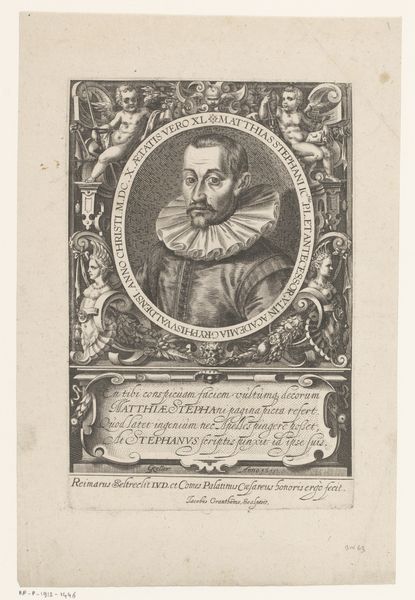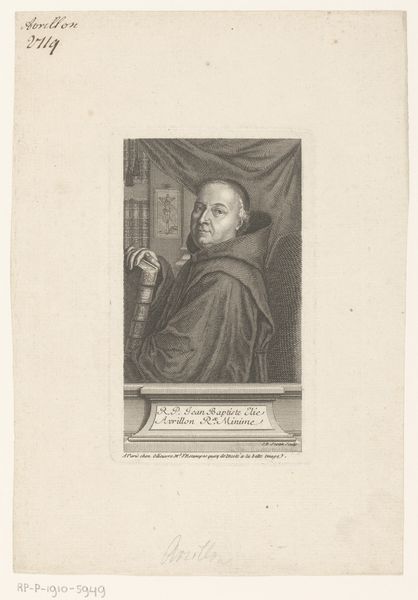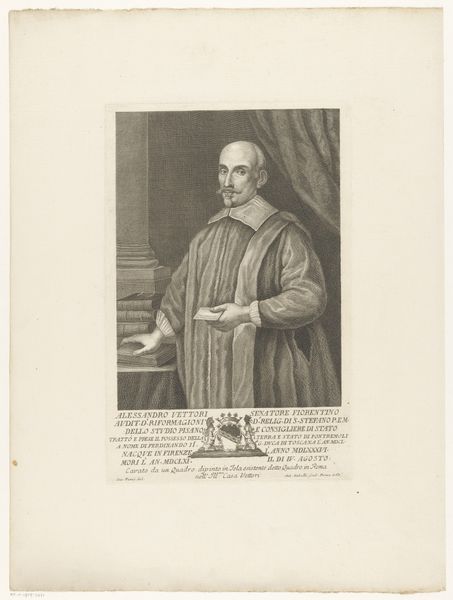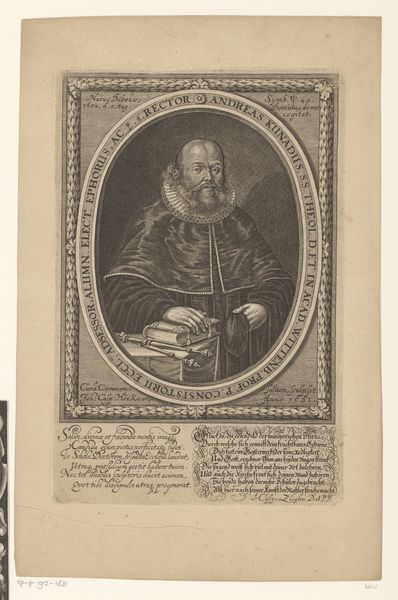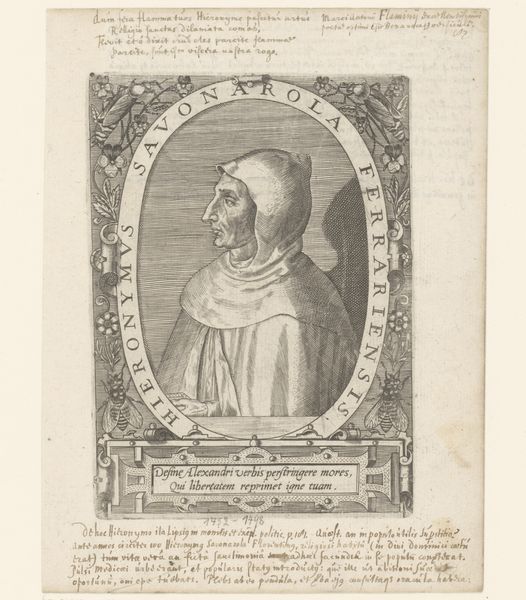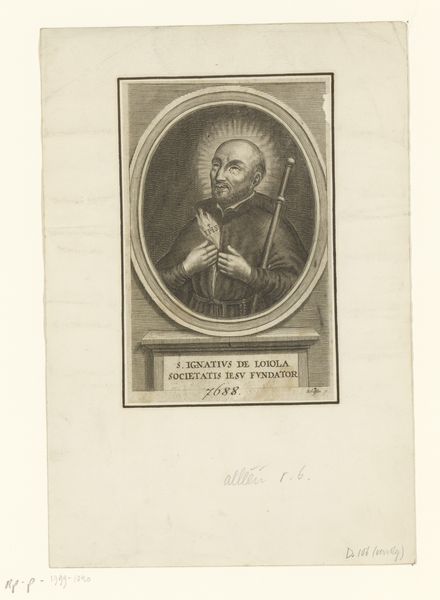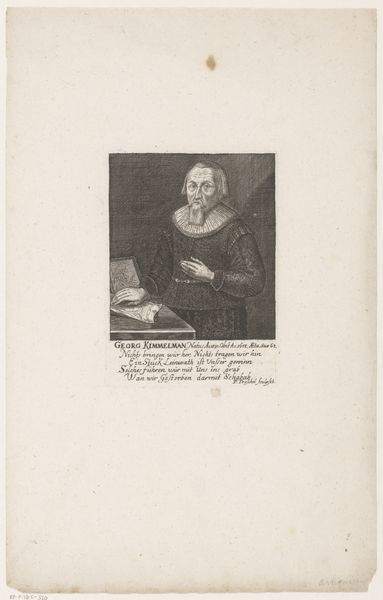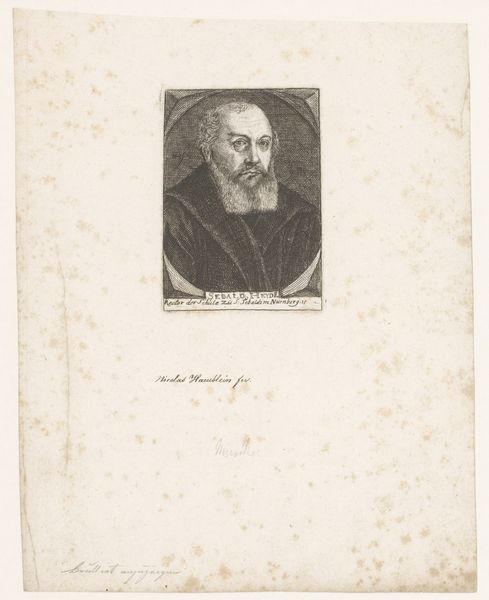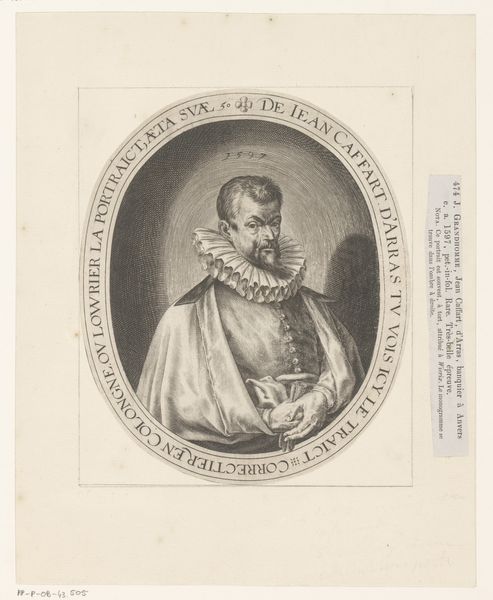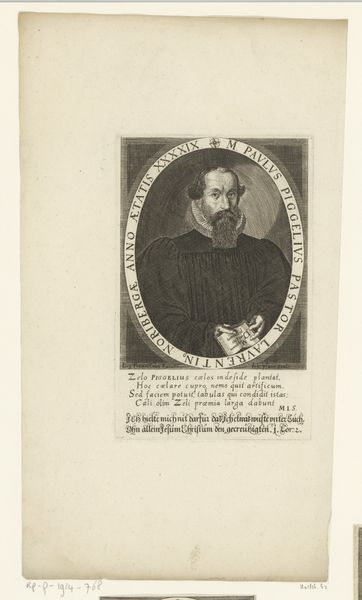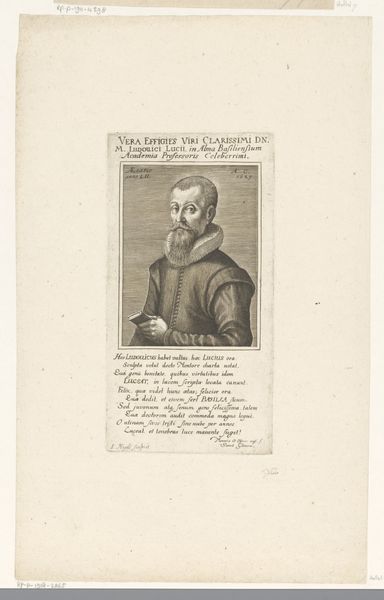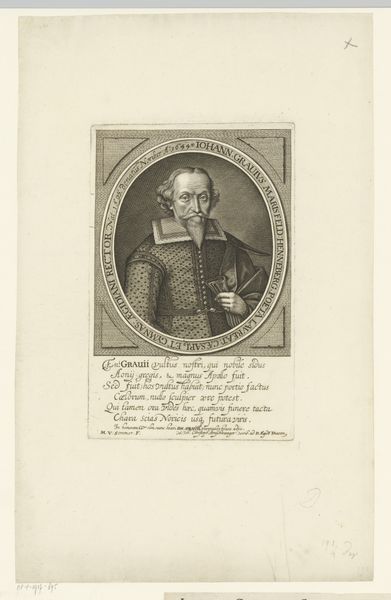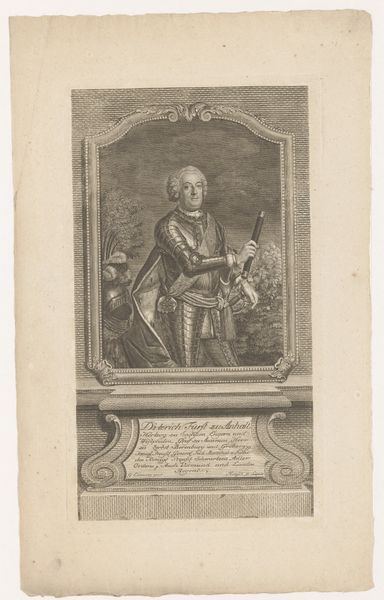
print, paper, engraving
#
portrait
#
baroque
# print
#
paper
#
history-painting
#
engraving
Dimensions: height 124 mm, width 82 mm
Copyright: Rijks Museum: Open Domain
Editor: Here we have Jonas Haas’s 1731 engraving, “Portret van Pedro de San José de Betancourt," made from ink on paper. It definitely carries this weight, a sense of reflection... a kind of gentle somberness? What catches your eye? Curator: Well, somber is certainly a thread running through it. But for me, it’s all in that skull perched on the desk! And those cherubs peeking down from above? There’s this palpable tension, isn't there, between earthly contemplation, a visual nudge about mortality, and this upward gaze, this beckoning toward something greater. It’s practically a Baroque highlight reel. Does the composition strike you as staged, in any way? Editor: Definitely staged. But deliberately so, perhaps? Curator: Exactly! It’s about constructing a narrative, a very particular image of Pedro de San José de Betancourt. The artist wants us to see him in a certain light. Notice how the skull and angels create this dynamic between life and death, the temporal and the divine, while his pose exudes a sense of piety and devotion. Is he gazing up toward the heavens or something else, perhaps? What kind of feeling do we get from his attire? Editor: His humble robes definitely add to the idea of him being devoted to his faith and of helping others, not focused on material possessions... almost like he's turning away from that skull in front of him, to follow the path shown by the cherubs? I hadn't considered all those symbolic relationships at first. Curator: Precisely! Engravings like these were powerful tools of communication, intended to disseminate a specific message. We now understand a little more, and begin to see the visual storytelling at work.
Comments
No comments
Be the first to comment and join the conversation on the ultimate creative platform.
